Mycosis Fungoides/Sézary syndrome (MF/SS)
You are here
Definition
Sézary syndrome (SS) and Mycosis Fungoides (MF) are T-cell lymphomas whose primary manifestation is in the skin. Mycosis Fungoides, is the most common form of cutaneous T-cell lymphoma. It generally affects the skin, but may progress internally over time.The name mycosis fungoides is somewhat misleading--it loosely means "mushroom-like fungal disease". The disease, however, is not fungal infection but rather a type of non-Hodgkin's lymphoma. It was so named because the skin tumors of a severe case as having a mushroom-like appearance.
Sézary's disease (or "Sézary syndrome") is a type of cutaneous lymphoma characterized by Albert Sézary."Sézary's cells" are T-cells that have pathological quantities of mucopolysaccharides. Sézary's disease is sometimes considered a late stage of mycosis fungoides
Click here for instructions on how to download the free FCS Express Reader to view and manipulate the sample cases.
| Case Name (click to open) | Comments | Size |
| Case 28 | Mycosis Fungoides / Seazary Syndrome | 702 kB |
Epidemiology
It is rare for the disease to appear before age 20, and it appears to be noticeably more common in males than females, especially over the age of 50, where the incidence of the disease (the risk per person in the population) does increase. The average age of onset is between 45 and 55 years of age for patients with patch and plaque disease only, but is over 60 for patients who present with tumours, erythroderma (red skin) or a leukemic form (the Sézary syndrome).
Possible causes
HTLV has thought to have been associated with both of the above cutaneous mycoses.
Morphology
The malignant cells are small to medium in size with irregular (cerebriform) nuclei. a minority of larger cells may be present (classical Sézary cells) but only in minority. (see below)
 |
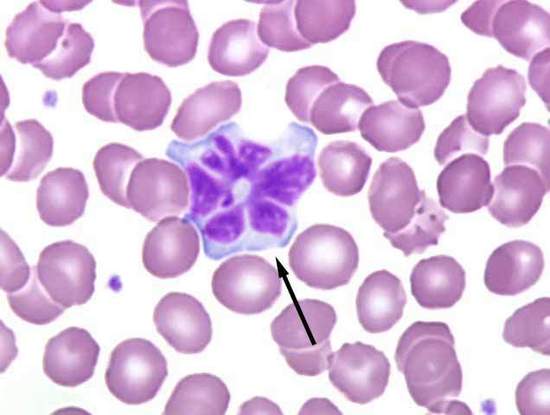 |
| Example morphology of MF/SS |
Immunophenotyping
The demonstration of an elevated CD4/CD8 ratio, and increased proportions of CD4+, CD7- T-lymphocytes. Tumor cells express CD2, CD3, TCRb, CD5 and CD7 (-/+). Most cases are CD4+, rarely is CD8 expressed. Aberrant T-cell phenotypes are common.
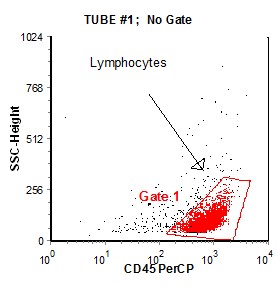 |
| Seazary cells are CD45 bright and low SS, identical to normal lymphocytes. |
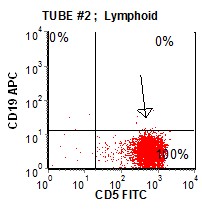 |
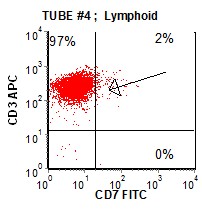 |
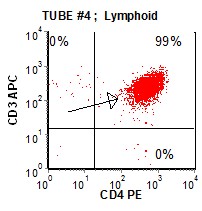 |
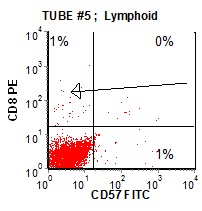 |
| The lymphocytes are CD5+, CD19-, CD3+ and CD4+ | The lymphocytes express CD3, but CD7 and CD8 are absent (aberrant). CD57 is also negative. |
Other relevant tests
Cytochemistry:
Genetics:T-cell receptor genes are clonally rearranged in most cases. Complex karyotypes are present in many cases in advanced stages.
Flow Diagnosis:MF/SS cells have a mature T-cell phenotype expressing CD3, CD4, CD45RO and often with aberrant expression of at least one pan-T cell antigen.
